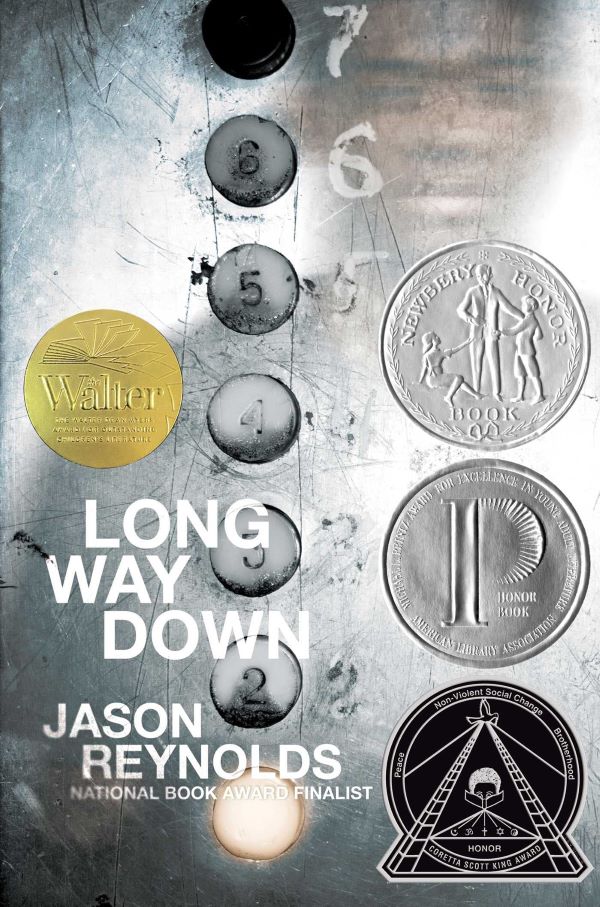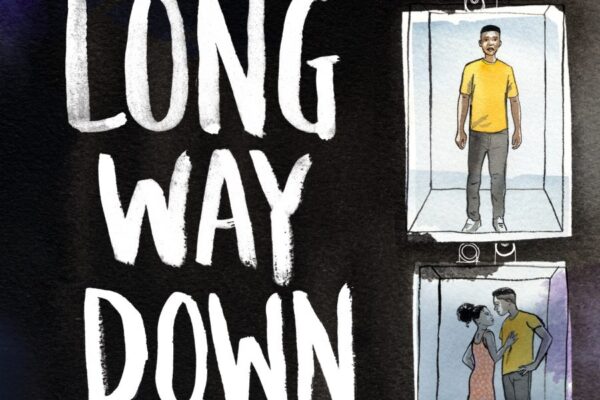
If you haven’t already, start with these 10 Lesson Plan Ideas for Long Way Down.
And after checking out those 10 lesson plans, here are three more to kick-start your Long Way Down unit:
Long Way Down Lesson Plans
Magical Realism in Long Way Down
Start this lesson by defining magical realism: Magical realism occurs when a story is presented in a realistic way, but it has magical elements (things that couldn’t happen in real life).
Ask your students to share some examples of magical realism from literature and movies. Take this opportunity to differentiate it from fantasy and science fiction.
Once students have a strong grasp of what constitutes magical realism, ask them how it might enhance or detract from a text. You can have them put these thoughts into a t-chart showing the pros and cons of magical realism. Do they generally like or dislike it?
When the ghosts start joining William on the elevator in Long Way Down, the story clearly shifts into the realm of magical realism. Ask your students what they think of this shift. Was it jarring? Did they have any trouble making the shift in their minds? How does it change the reading experience?
Finally, you can have them write a paragraph explaining how magical realism affects the story in Long Way Down by Jason Reynolds.
Long Way Down Theme Workshop
While theme is perhaps the most important aspect of any piece of literature, it is a concept students often struggle to consistently grasp. They often confuse theme with topic.
In this short workshop, students will learn what theme is, identify themes in Long Way Down, write theme statements, and write theme paragraphs.
Start by defining theme: a theme is a main idea or underlying message in a text.
It says something about life!
Often the best way to get students to understand the difference between theme and topic, is to give them a simple formula to follow:
Theme = Topic + Insight
What does the novel say about the topic?
Once you have covered what a theme is, get your students to list topics from Long Way Down. Then ask them to discuss what they novel says about each topic.
From there, students can write theme statements for Long Way Down. Get them to follow a strict format to ensure that they write proper theme statements:
Jason Reynolds’ Long Way Down shows that…
Have students share their theme statements. Discuss them and make sure they are getting it.
Finally, you can have your students write theme paragraphs expanding on their theme statements. Each paragraph should start with a theme statement as the topic sentence. It should then explain how the novel shows this theme using specific examples.
Code of the Streets
In 1994, Elijah Anderson wrote an essay titled “Code of the Streets” for The Atlantic about gun violence in black communities and the mentality that perpetuates it. Unfortunately, his essay remains relevant today, and is closely connected to the themes explore by Jason Reynolds in Long Way Down.
“In this essay in urban anthropology a social scientist takes us inside a world most of us only glimpse in grisly headlines—”Teen Killed in Drive By Shooting”—to show us how a desperate search for respect governs social relations among many African-American young men.”
The Atlantic, May 1994
Have your students read the essay alone or in groups. It is fairly long, so you may want to split this lesson up over several days. You could do one or two of the seven sections of the essay each day.
While they read, students should make note of key terms and vocabulary, and key points from the essay.
After reading, ask them to summarize each segment of the essay:
- DECENT AND STREET FAMILIES
- CAMPAIGNING FOR RESPECT
- SELF-IMAGE BASED ON “JUICE”
- BY TRIAL OF MANHOOD
- GIRLS AND BOYS
- “GOING FOR BAD”
- AN OPPOSITIONAL CULTURE
Then have students connect each segment of the essay to Long Way Down by Jason Reynolds. You can do this individually, in groups, or as a whole class discussion.



1 thought on “Three More Long Way Down Lesson Plans”